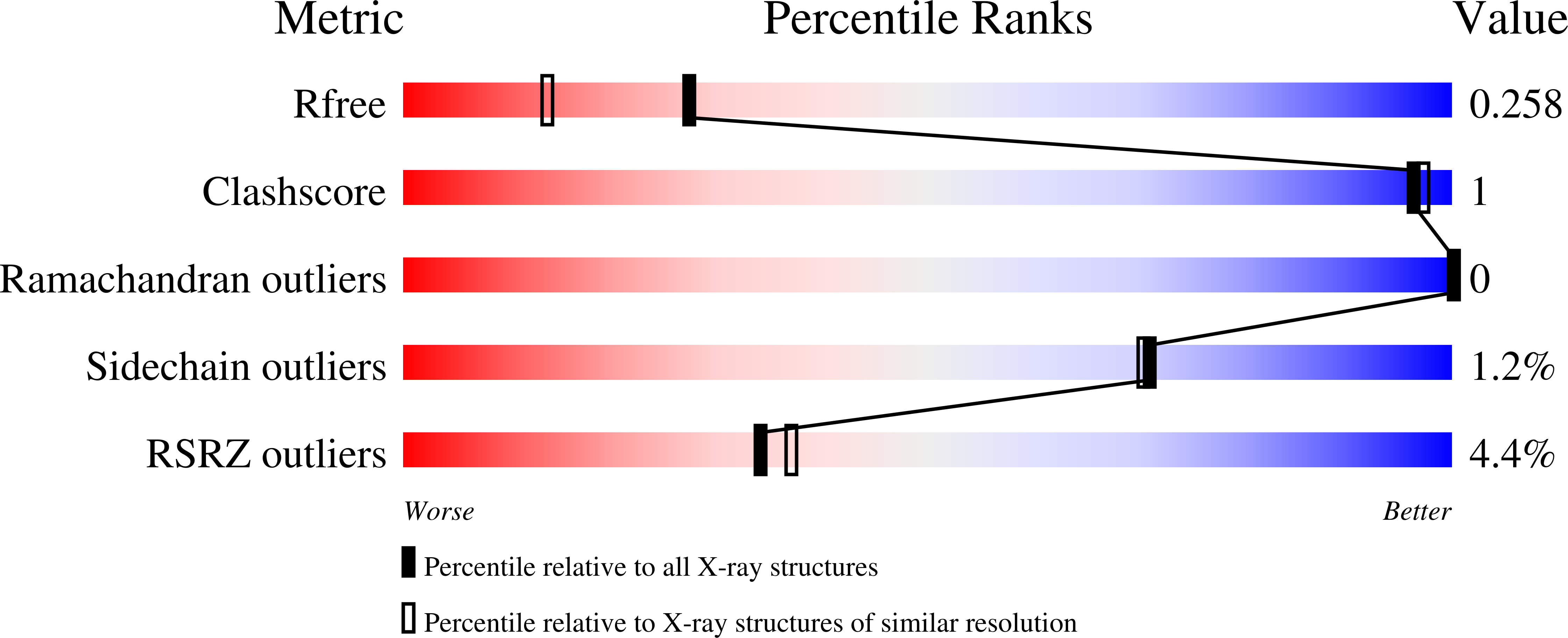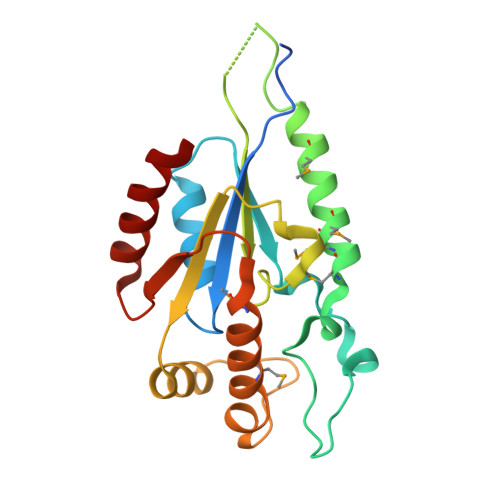Nicotinamide Riboside Kinase Structures Reveal New Pathways to NAD(+).
Tempel, W., Rabeh, W.M., Bogan, K.L., Belenky, P., Wojcik, M., Seidle, H.F., Nedyalkova, L., Yang, T., Sauve, A.A., Park, H.W., Brenner, C.(2007) PLoS Biol 5: e263-e263
- PubMed: 17914902
- DOI: https://doi.org/10.1371/journal.pbio.0050263
- Primary Citation of Related Structures:
2P0E, 2QSY, 2QSZ, 2QT0, 2QT1 - PubMed Abstract:
The eukaryotic nicotinamide riboside kinase (Nrk) pathway, which is induced in response to nerve damage and promotes replicative life span in yeast, converts nicotinamide riboside to nicotinamide adenine dinucleotide (NAD+) by phosphorylation and adenylylation. Crystal structures of human Nrk1 bound to nucleoside and nucleotide substrates and products revealed an enzyme structurally similar to Rossmann fold metabolite kinases and allowed the identification of active site residues, which were shown to be essential for human Nrk1 and Nrk2 activity in vivo. Although the structures account for the 500-fold discrimination between nicotinamide riboside and pyrimidine nucleosides, no enzyme feature was identified to recognize the distinctive carboxamide group of nicotinamide riboside. Indeed, nicotinic acid riboside is a specific substrate of human Nrk enzymes and is utilized in yeast in a novel biosynthetic pathway that depends on Nrk and NAD+ synthetase. Additionally, nicotinic acid riboside is utilized in vivo by Urh1, Pnp1, and Preiss-Handler salvage. Thus, crystal structures of Nrk1 led to the identification of new pathways to NAD+.
Organizational Affiliation:
Structural Genomics Consortium and Department of Pharmacology, University of Toronto, Toronto, Canada.



















